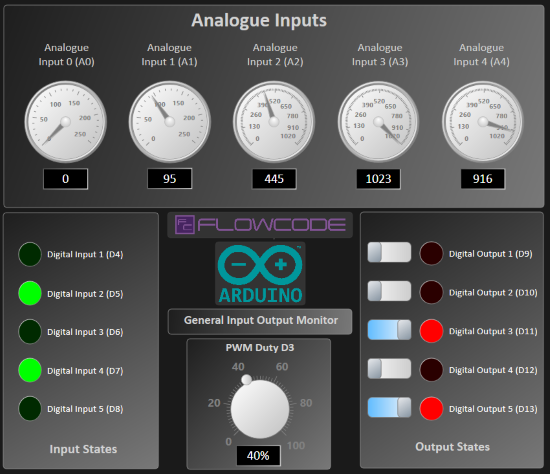Difference between revisions of "Examples and Tutorials"
| Line 1: | Line 1: | ||
==Introduction to Microcontrollers Course== | ==Introduction to Microcontrollers Course== | ||
| − | We recommend going through the Flowcode section of the | + | We recommend going through the Flowcode section of the https://www.matrixtsl.com/resources/files/datasheets/Microcontroller%20compete%20course.pdf course which has been updated for the latest version of Flowcode and is available for free at the learning center section on the main [http://www.matrixtsl.com www.matrixtsl.com] website. |
==Embedded== | ==Embedded== | ||
Revision as of 12:23, 24 July 2023
Contents
Introduction to Microcontrollers Course
We recommend going through the Flowcode section of the https://www.matrixtsl.com/resources/files/datasheets/Microcontroller%20compete%20course.pdf course which has been updated for the latest version of Flowcode and is available for free at the learning center section on the main www.matrixtsl.com website.
Embedded
Heat Control - Coarse
lots of modern electronic systems include some form of simple closed loop heat control to function. Some examples include a kitchen oven, a microwave oven, an iron, hair straighteners, electric heater, etc.
These devices typically work by monitoring the temperature and then switching on a heating element when the temperature is less then the required temperature. The element is then switched off again when the required temperature is reached.
The electronics involved could be a microcontroller digital output pin connected to a simple transistor, diode and relay to control the heater element and a thermistor to measure the heat.
Heat Control - Fine
More advanced electronic systems may require a bit more fine control of the temperature to avoid overshoot and improve response to load changes. Some examples include a SMD reflow oven, 3D printer hotend, soldering iron, etc.
These devices typically work by monitoring the temperature and then providing an analogue output to a heating element. The analogue value is calculated using a transfer function in this case we are using PID control.
The electronics involved could be a microcontroller PWM output pin connected to logic level FET or TRIAC to control the heater element and a thermocouple to measure the heat.
App Developer
A range of example App Developer projects are available from here: https://www.flowcode.co.uk/app-developer/free-apps/
Scenarios
This page contains a list of the scenarios included with Flowcode.
The corresponding components can be found in the Runtime section of the component toolbar.
